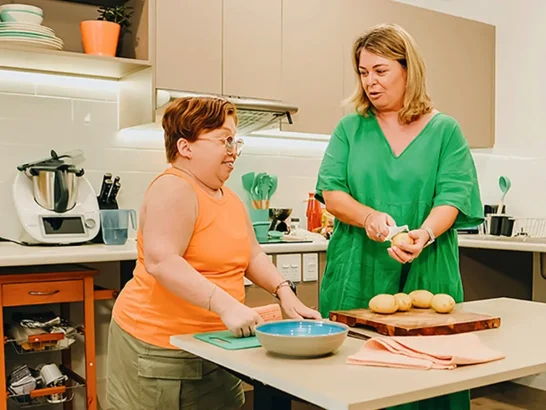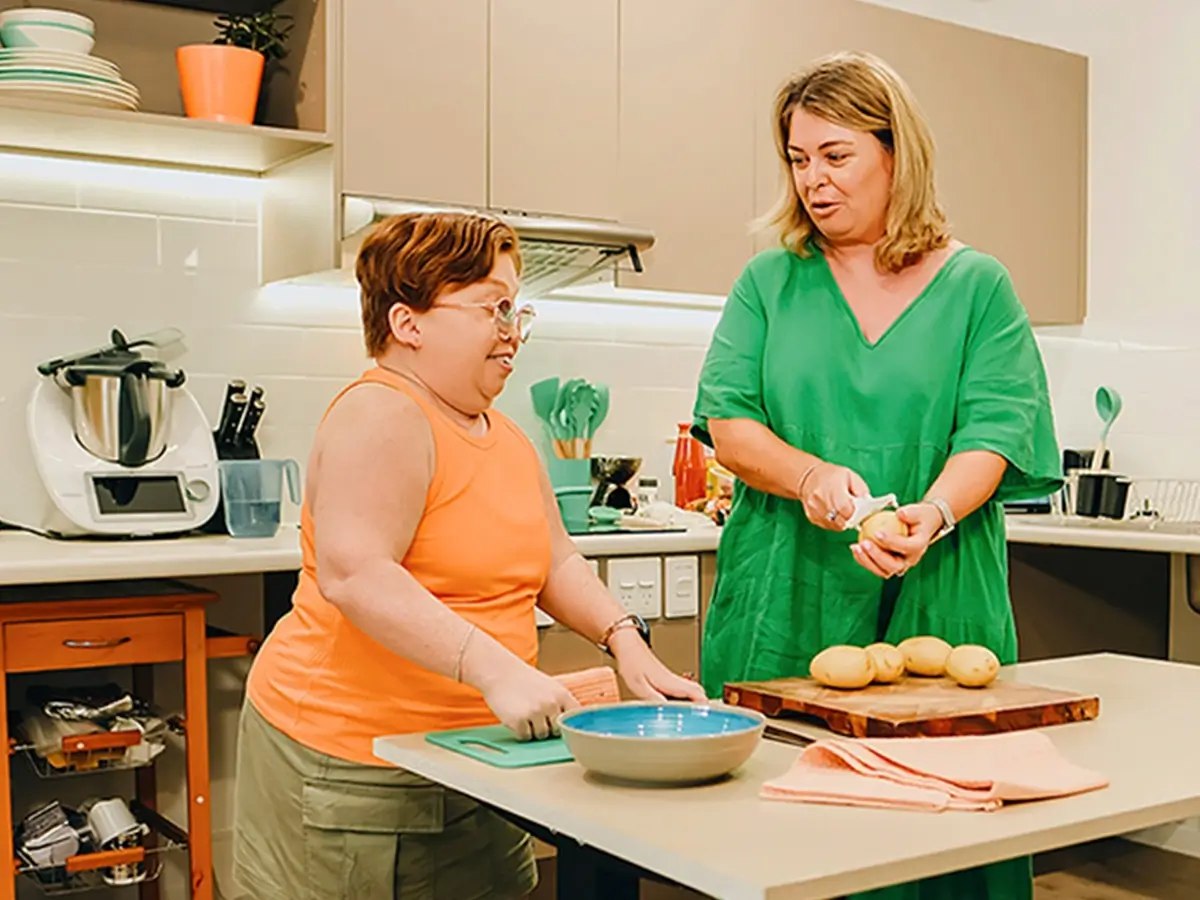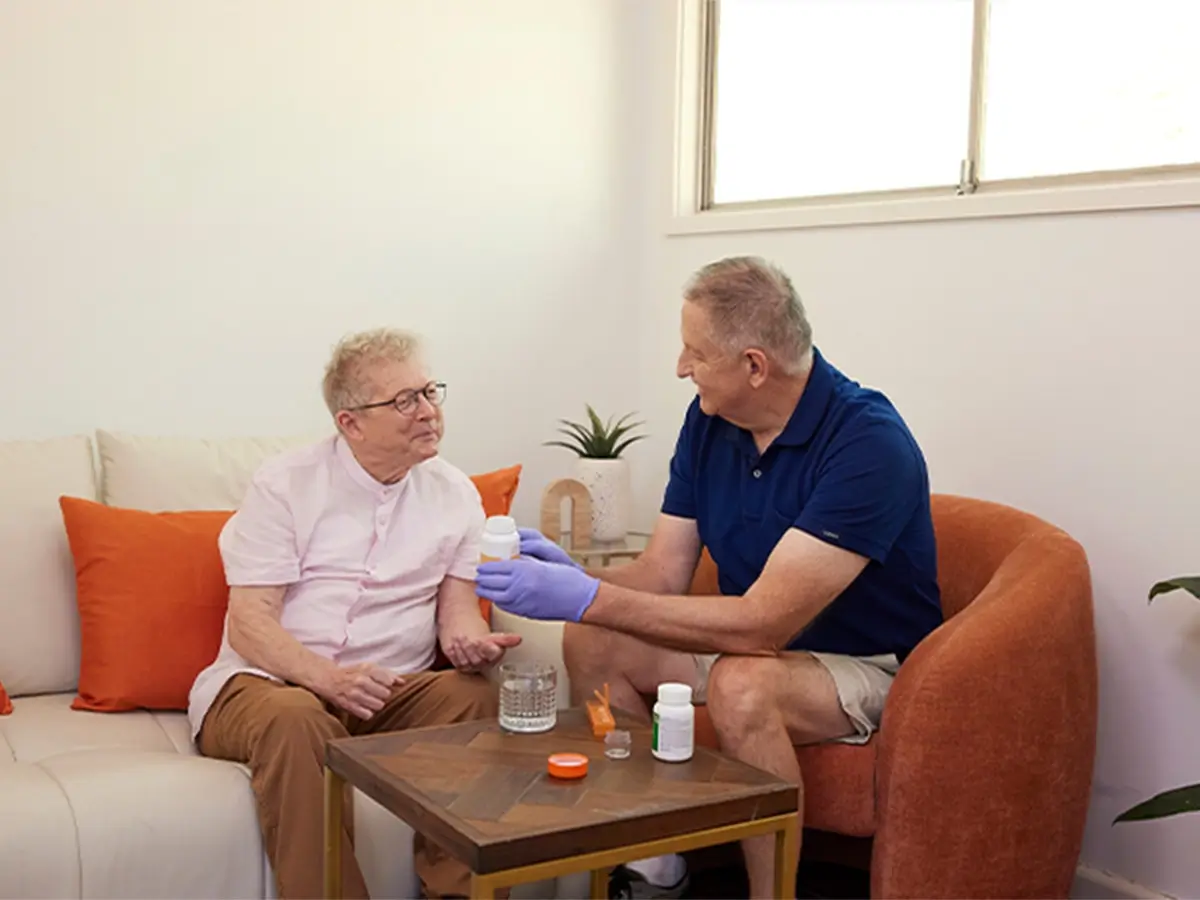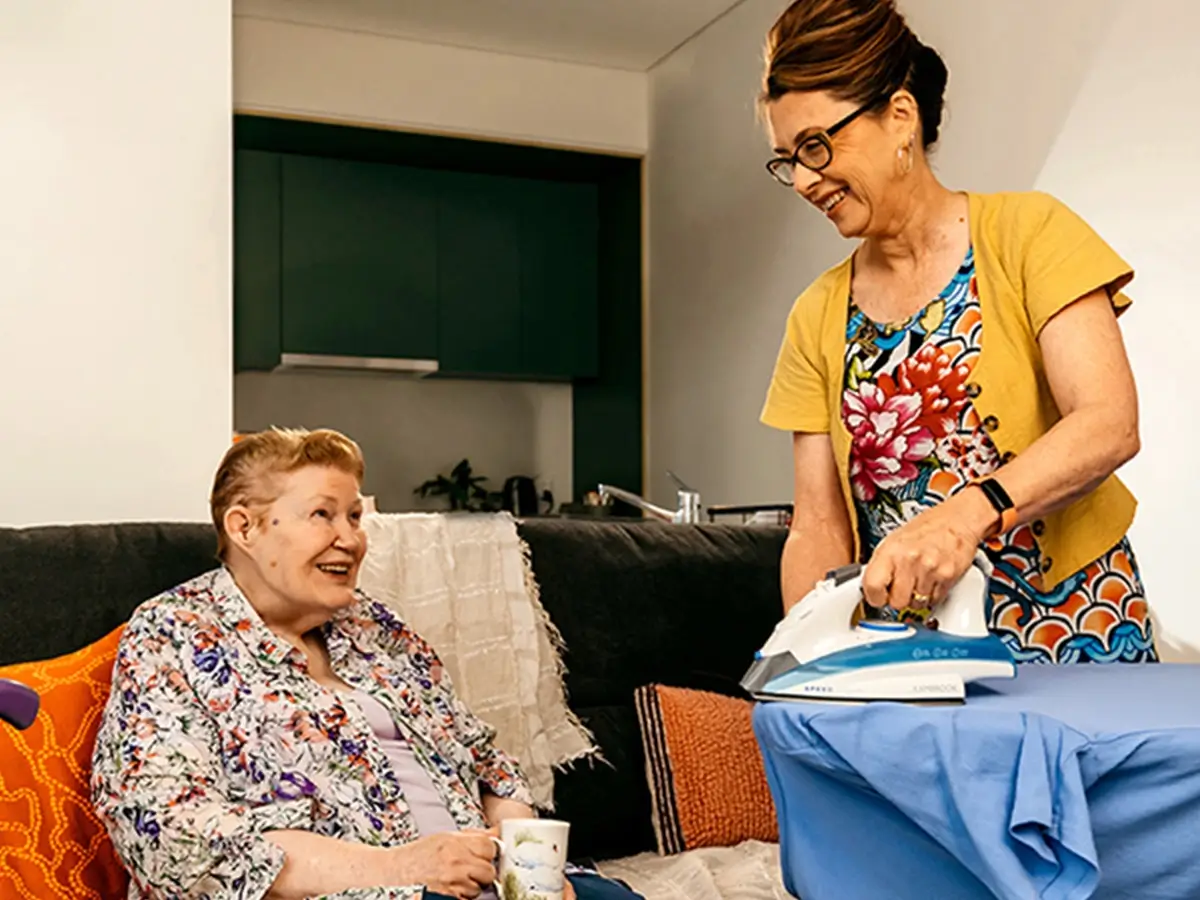The home and living journey is both complex and personal. The Mable Home and Living Consultants is a service that can help guide you if you or your loved one is just starting to think about moving out or living more independently.
In our webinar, Starting your NDIS Home and Living Journey with Confidence, lead consultant, Libby Ellis, who has over 25 years of experience in the disability sector, shares practical guidance on shaping the vision for your home, understanding available supports, and preparing evidence for NDIS funding.
Why individuals start their independent living journey
Understanding your “why” is the first step. Maybe there are sudden changes in your living arrangements, or you are living in a home that is no longer accessible or safe. Perhaps your parents are ageing, or you simply want more independence or arrangements that are more in tune with your needs.
“If you have a sense that things are changing – or need to change – this is a really good time to get started”, says Libby. This way, you can start planning early and stay in control of changes as much as possible, while considering NDIS timelines and complexity.
The three main steps to get started on your home and living journey
Have a clear vision of your version of home
Understand what NDIS funding best matches your vision
Gather evidence to support your vision and eligibility
The NDIA requires documentation and evidence to assess your eligibility or your need for different home and living supports.
Key message: Start with your vision, not with the funding. Funding is certainly an enabler, but when you start your journey with a focus on funding, “you’re not going to find a clear description of the model that’s right for you”, says Libby.
Shaping your vision for home
Start by reflecting on your personal version of home. This creates a strong foundation for planning supports that truly fit your needs.
Below are some practical ideas to get you started.
Start with what you know
You don’t need to have all the answers. You likely already know what is working for you, what must not happen and what keeps you safe. These thoughts reveal gaps and help build a clearer picture of your future home.
Look at real stories to spark ideas
Hearing from individuals with lived experience or attending webinars like this can help you figure out what you like, don’t like, or want to try. These stories can guide your thinking around routines, relationships, your ideal home environment, and the supports that work for you, as support needs vary by environment or settings.
List your worries to build safeguards
Turn worries into preparedness and confidence. List out your “what-ifs”. For example, “What if Cameron does something with the stove?”
Then explore:
- What can we put in place before that happens?
- What do we need if it does happen?
Don't forget the "background" work
Different types of home and living supports
The NDIS doesn’t fund rent, mortgage payments or day-to-day living expenses, but it can provide funding for supports related to how and where you live, based on your needs and goals. The range of housing options available are:
- Living in your family home
- Renting privately or through social housing
- Living in someone else’s home
- Owning your own home
- Specialist Disability Accommodation (SDA)
- Non-SDA supported accommodation (sometimes called SIL accommodation)
Learn more about the different types of individualised living options.
It’s important to note that only SDA is funded as actual housing by the NDIS. This funding is for purpose-built housing with special design features built for those with extreme functional impairments or very high support needs (this covers the home itself, not support staff).
The NDIS provides funding for supports needed to live independently. This falls under three main categories:
- Supported Independent Living (SIL): For those who require 24/7 or regular ongoing assistance, SIL covers paid personal support (not rent or board) often in shared living arrangements.
- Individualised Living Options (ILO): A flexible model enabling a living arrangement that suits you, such as living with a housemate, or someone who is not related to you, in their home (called a host), or on your own with the supports you need. You need to demonstrate evidence that you need support at home for at least 6 hours each day.
- Core supports: These are everyday supports needed for daily living to help with routine tasks such as personal care, cooking, cleaning, shopping, etc. They are funded under your Core Supports budget and are not tied to a specific living arrangement.
What is evidence?
When applying for NDIS home and living supports, strong evidence is critical. Each home and living option, like SIL or SDA, has specific eligibility requirements and must meet the “reasonable and necessary” criteria. The NDIA uses evidence to assess whether supports are required and how a person’s disability impacts their daily life and functional capacity. To strengthen your application, make sure your evidence includes:
- A housing goal in your NDIS plan.
- A detailed breakdown and description of daily support needs (how often, when, and what type).
- Functional capacity reports from specialists (e.g. OTs) and impact on daily life.
- Current support needs, reflecting any recent changes.
- A record of other housing options and why they are unsuitable.
The NDIA has a supporting evidence form to include with other evidence. Although it seems straightforward to complete, we recommend seeking advice and professional assistance before submitting it. It should be done when all other assessments and evidence are complete, summarise and complement that evidence.
How can we help?
Now that you have an overview of NDIS-funded home and living options, watching the full webinar will deepen your understanding and offer practical insights.
Our Home and Living Consultants are helping others go through these steps, navigate the NDIS, and achieve the home they need.




